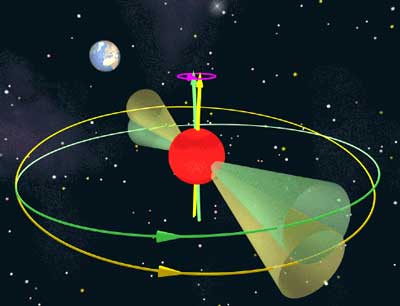 |
Neutron Stars
- What are they? Extremely compact
and dense star remnants, made mostly of neutrons, held up by
neutron degeneracy pressure which balances gravity.
- How do they form? From the collapsed
cores of massive stars after supernova explosions; It appears
that during the formation process they receive a kick that gives
them a speed of up to 1000 km/s, for reasons that are not understood.
- Mass and size: 1.4 to almost 3 solar
masses, 20-30 km diameter; The more massive, the smaller they
are! Their density is billions of tons per cc, their gravity tens
of millions of times stronger than Earth's.
- Important facts: Fast rotation
(spin-up from collapse, and possible later accretion); Magnetic
fields up to a trillion times the Earth's (or at least that's
what our models tell us).
- Different kinds: They depend
on the radiation they emit, mostly very high energy; [Two types
are Soft Gamma-ray Repeaters (SGR), or Anomalous X-ray Pulsars
(AXP), which are actually magnetars].
- How do we find them? They are so small
that are
difficult to see directly (although their hot surfaces
can emit X-rays), but with some
luck...
|



_150x168.jpg)
![]()